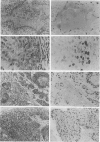Abstract
The two techniques of flow cytometry analysis (FCM) and immunohistochemical localisation of bromodeoxyuridine (BrdUrd) incorporation after in vivo administration, were combined to study proliferation in squamous cell carcinoma of the head and neck region. Care was taken in this study to ensure that similar material was processed using both techniques such that comparisons could be made. FCM underestimated the labelling index (LI) in tumours classified as diploid compared to the histological evaluation of the tumour cells within those tumours (4.6% vs 17.1%). However, in aneuploid tumours, the FCM LI (10.7%) was similar to that obtained from histology (13.5%). Indeed, proliferation assessed by the combination of histology LI and FCM duration of S-phase (Ts) indicated that diploid tumours had a shorter median potential doubling time (Tpot) of 2.1 days compared to aneuploid (2.8 days). Despite the heterogeneity of proliferation evident histologically within the specimens, there was not a wide variation in the results of FCM analysis when multiple samples from resections were studied. Using FCM data alone, 46% of the tumours showed a Tpot of less than 5 days. When the Ts from the FCM data was combined with the average histological LI, 84% were less than 5 days and with the maximum LI, 99% were within this time interval. Compared with previous estimates, the proportion of tumours possessing proliferative characteristics which may indicate the need for acceleration of treatment seems to be much larger.
Full text
PDF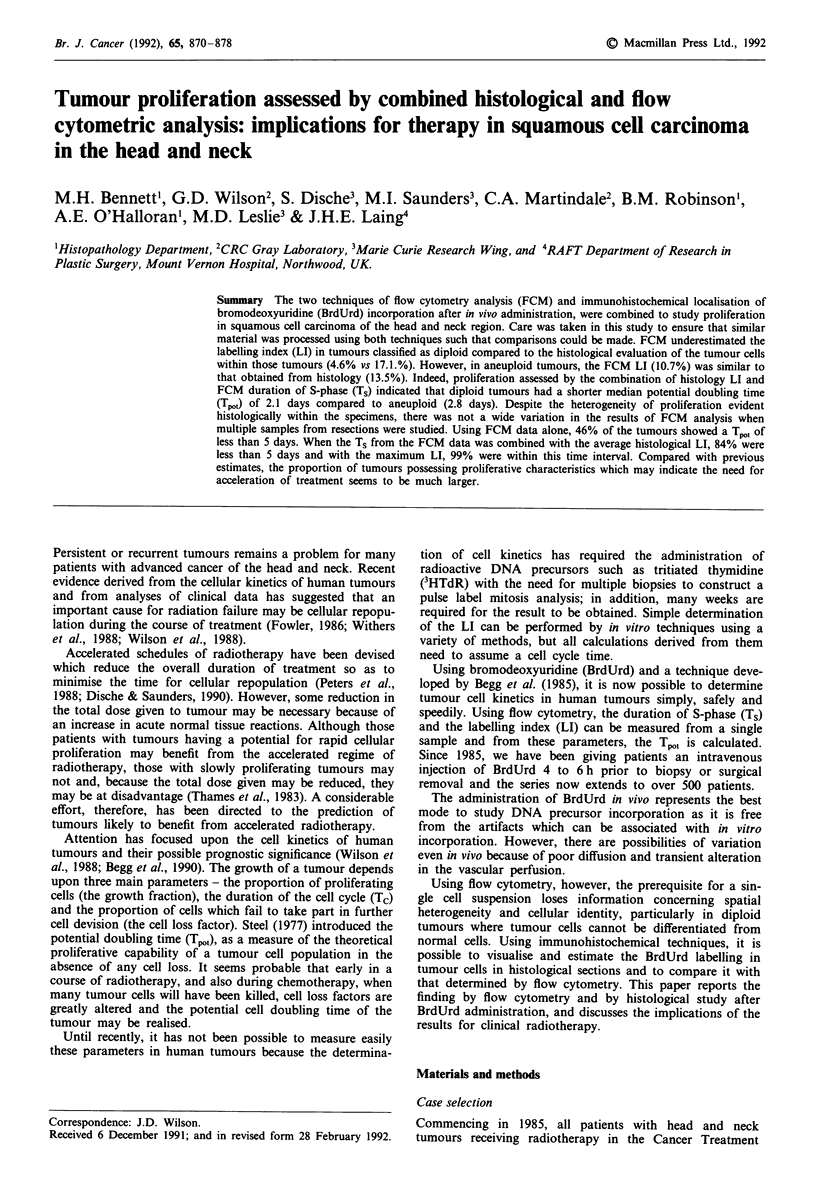
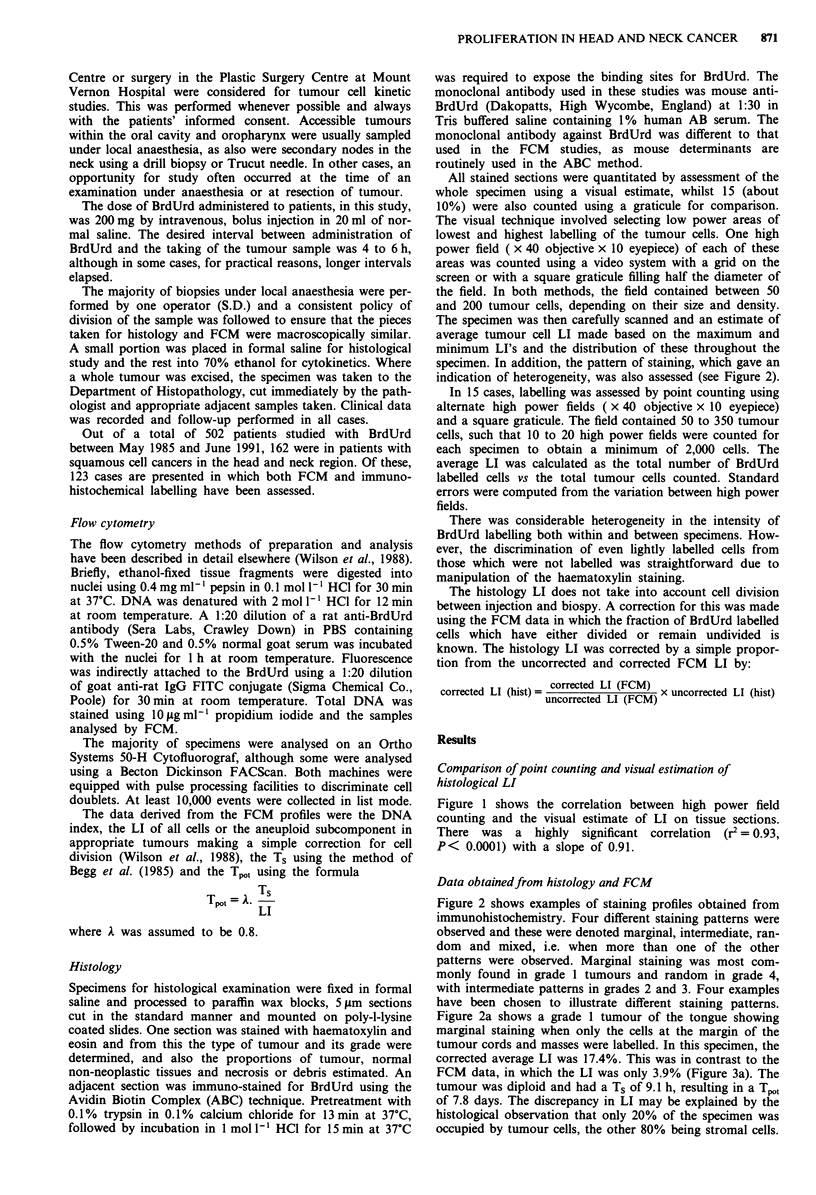
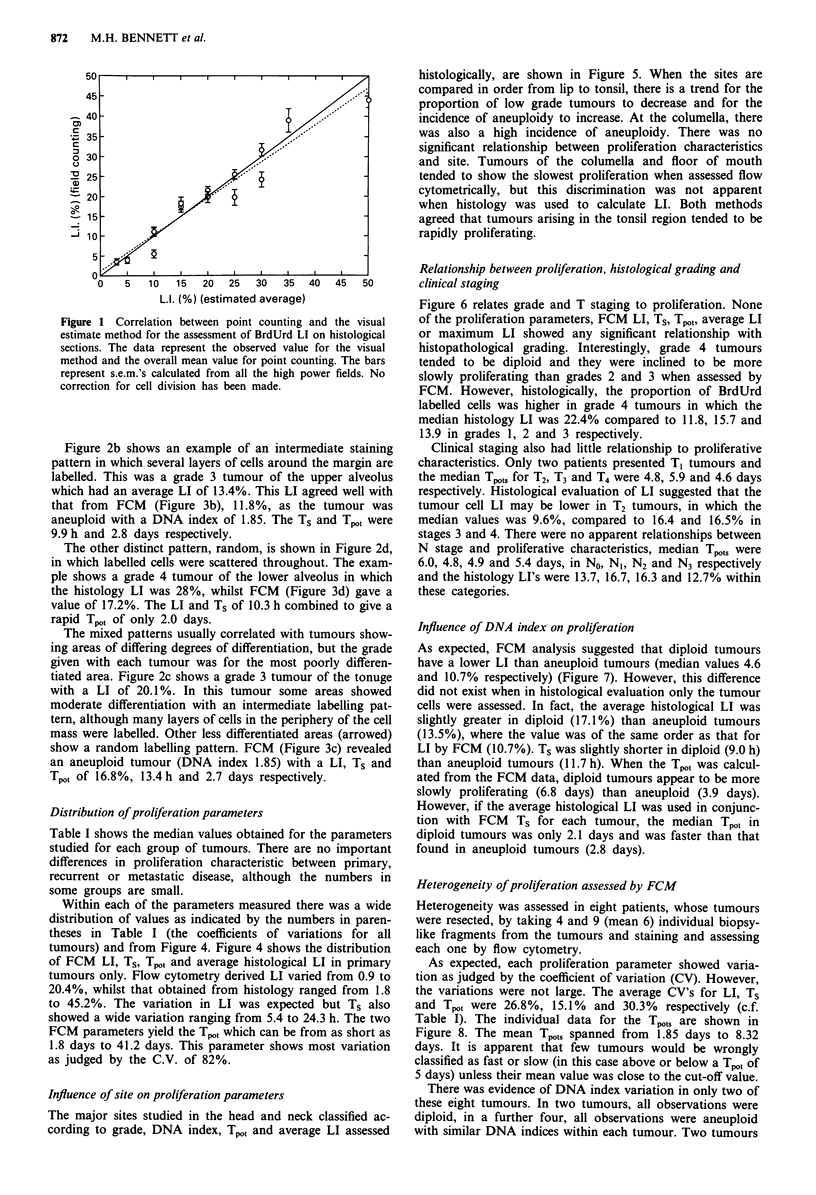
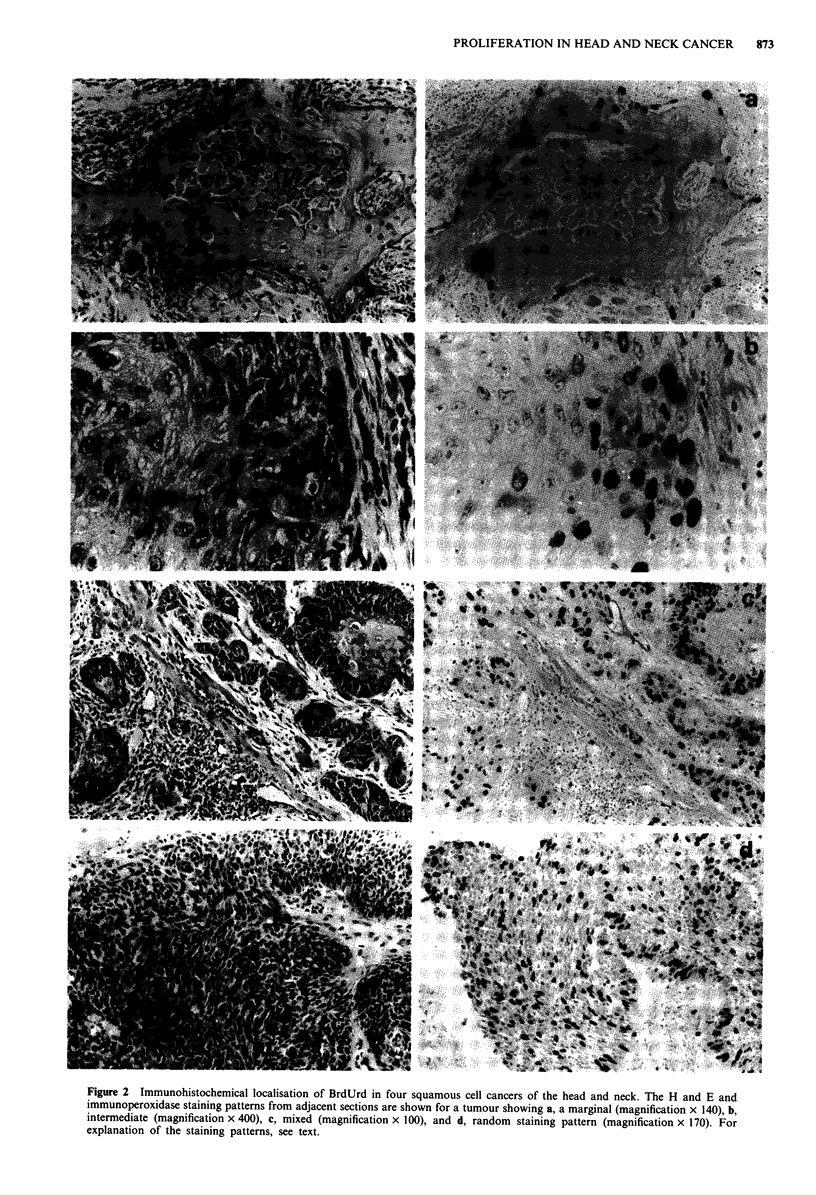
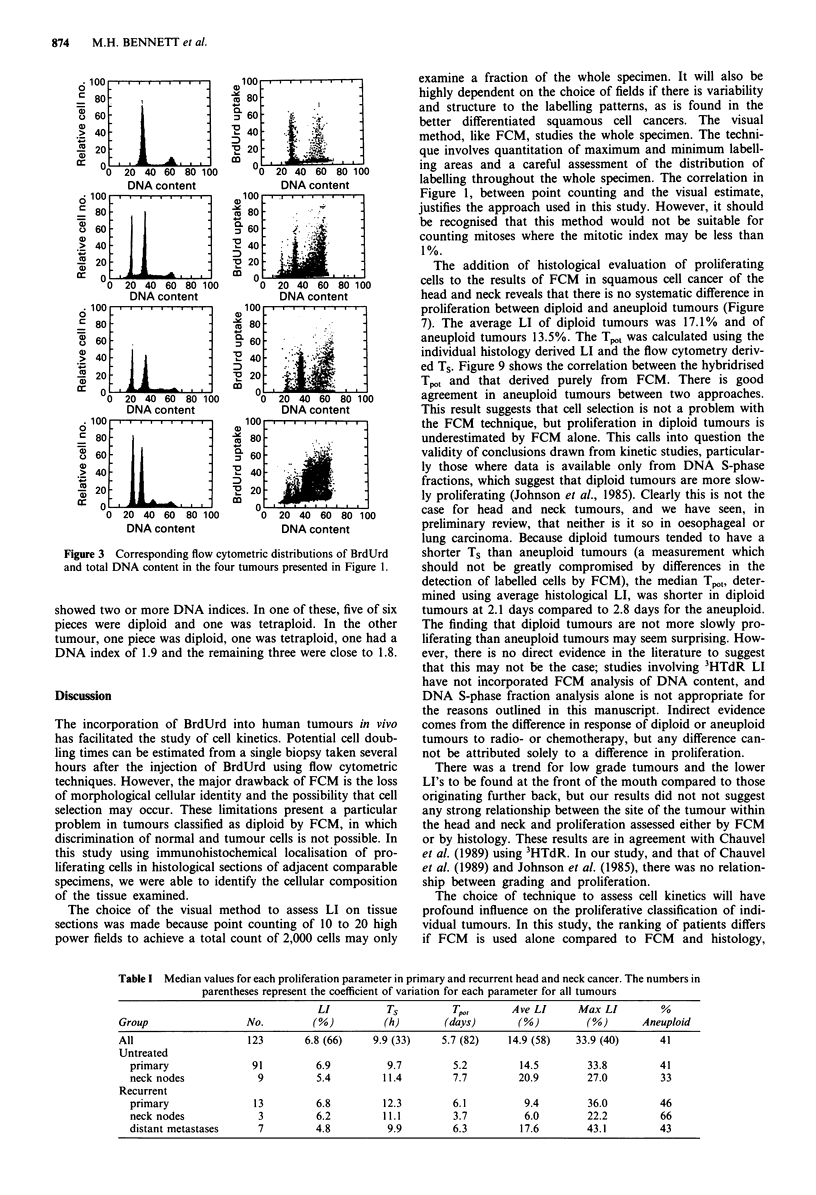
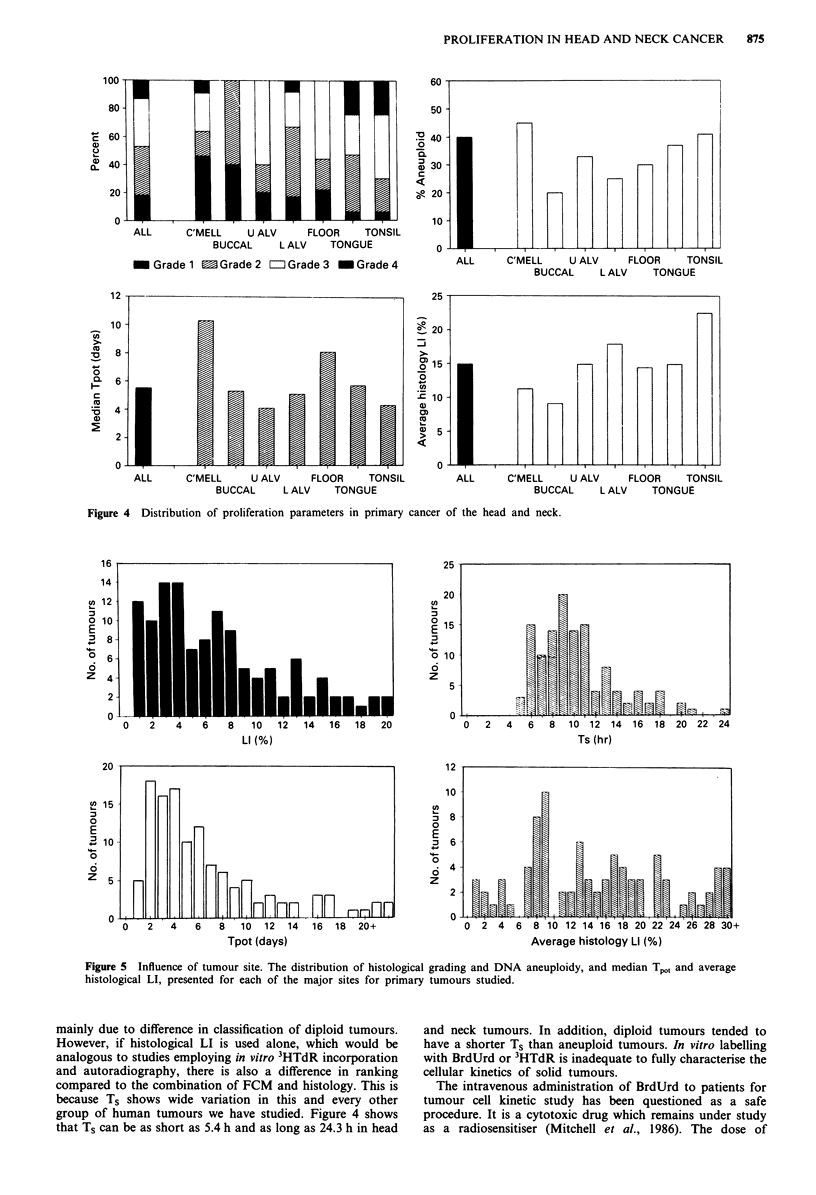
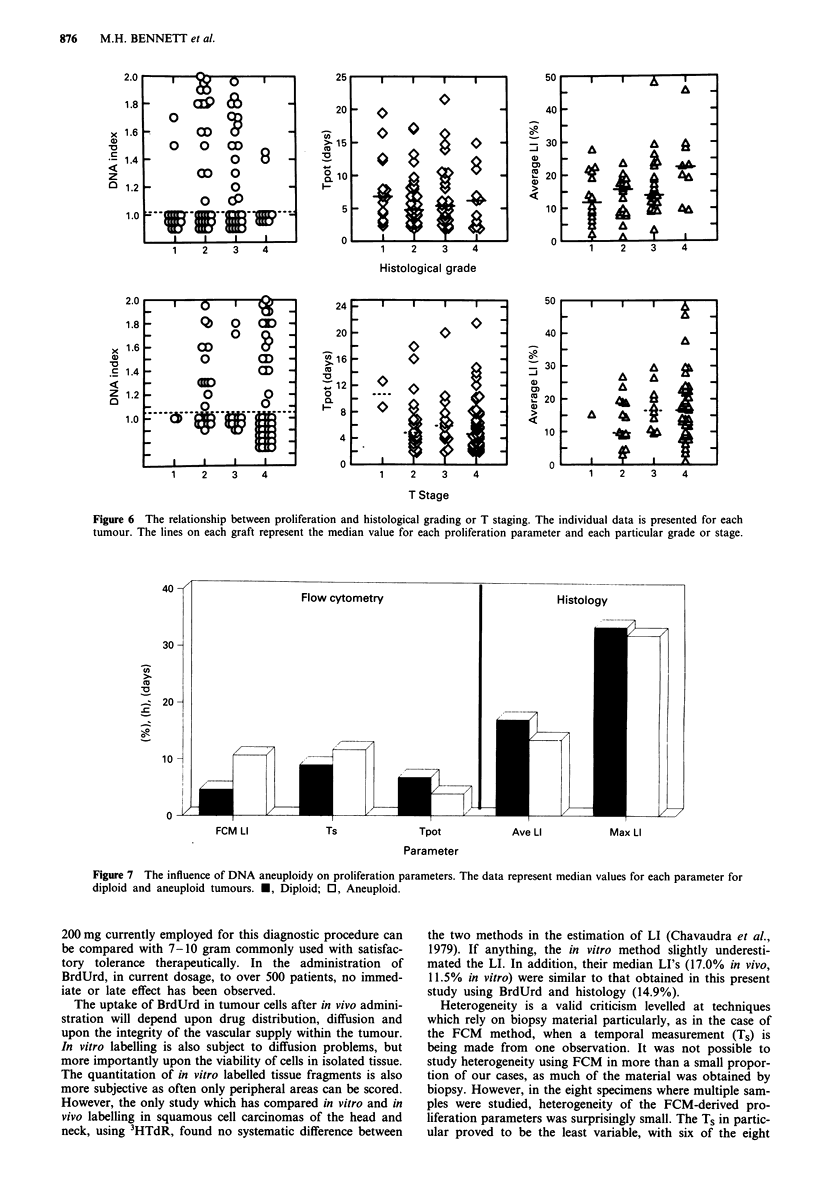
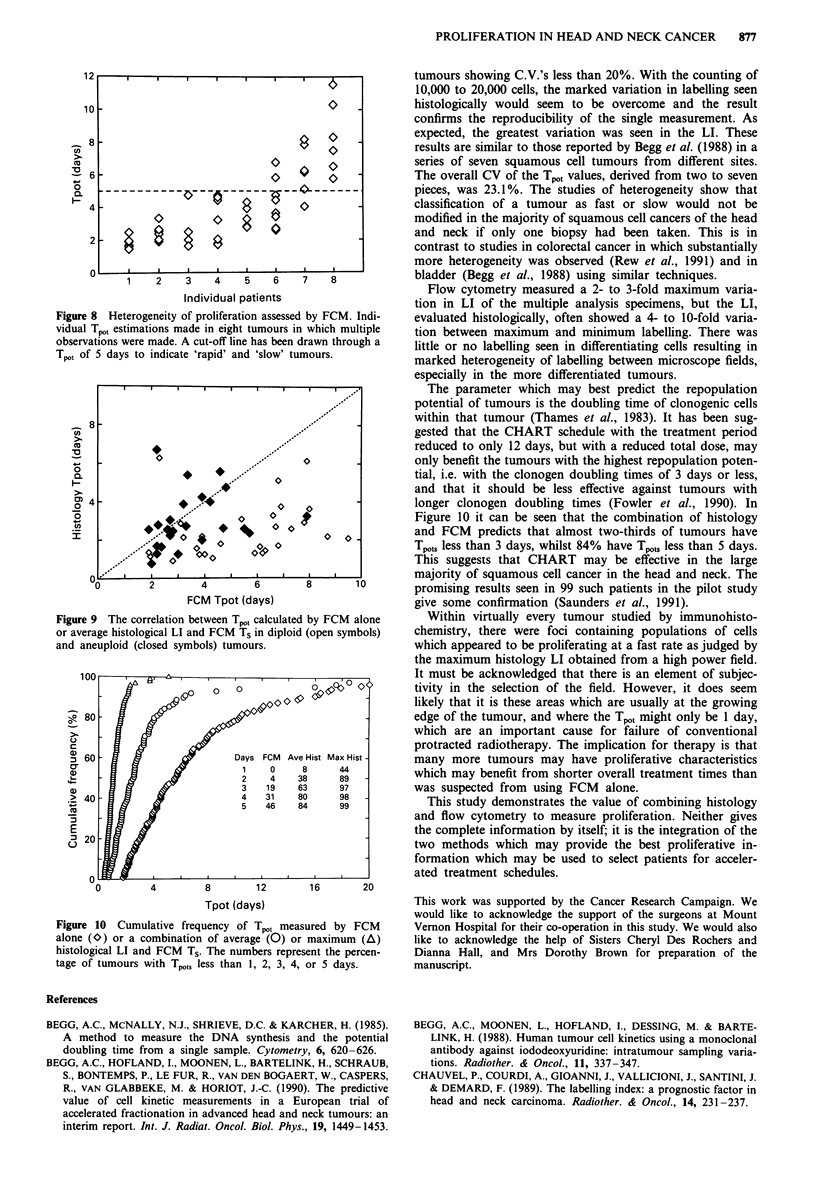
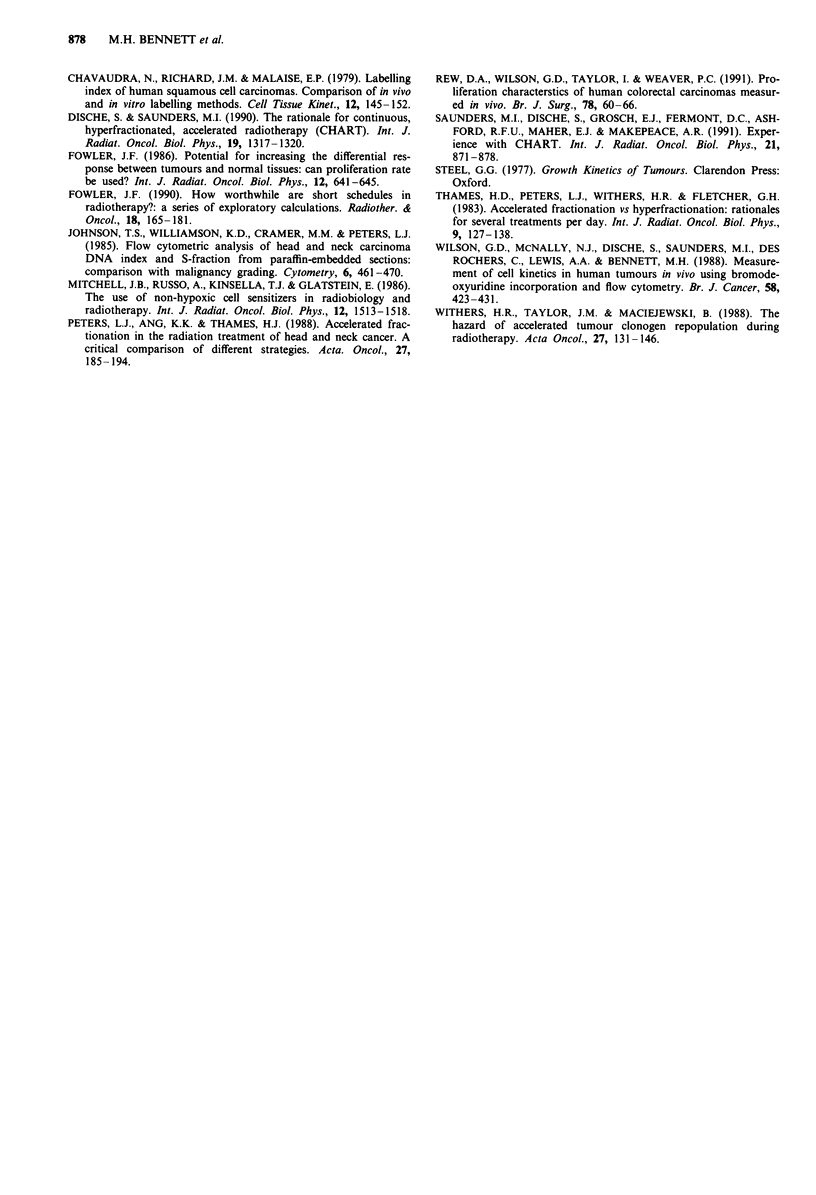
Images in this article
Selected References
These references are in PubMed. This may not be the complete list of references from this article.
- Begg A. C., Hofland I., Moonen L., Bartelink H., Schraub S., Bontemps P., Le Fur R., Van Den Bogaert W., Caspers R., Van Glabbeke M. The predictive value of cell kinetic measurements in a European trial of accelerated fractionation in advanced head and neck tumors: an interim report. Int J Radiat Oncol Biol Phys. 1990 Dec;19(6):1449–1453. doi: 10.1016/0360-3016(90)90357-p. [DOI] [PubMed] [Google Scholar]
- Begg A. C., McNally N. J., Shrieve D. C., Kärcher H. A method to measure the duration of DNA synthesis and the potential doubling time from a single sample. Cytometry. 1985 Nov;6(6):620–626. doi: 10.1002/cyto.990060618. [DOI] [PubMed] [Google Scholar]
- Chauvel P., Courdi A., Gioanni J., Vallicioni J., Santini J., Demard F. The labelling index: a prognostic factor in head and neck carcinoma. Radiother Oncol. 1989 Mar;14(3):231–237. doi: 10.1016/0167-8140(89)90171-0. [DOI] [PubMed] [Google Scholar]
- Chavaudra N., Richard J. M., Malaise E. P. Labelling index of human squamous cell carcinomas. Comparison of in vivo and in vitro labelling methods. Cell Tissue Kinet. 1979 Mar;12(2):145–152. doi: 10.1111/j.1365-2184.1979.tb00121.x. [DOI] [PubMed] [Google Scholar]
- Dische S., Saunders M. I. The rationale for continuous, hyperfractionated, accelerated radiotherapy (CHART). Int J Radiat Oncol Biol Phys. 1990 Nov;19(5):1317–1320. doi: 10.1016/0360-3016(90)90251-e. [DOI] [PubMed] [Google Scholar]
- Fowler J. F. How worthwhile are short schedules in radiotherapy? A series of exploratory calculations. Radiother Oncol. 1990 Jun;18(2):165–181. doi: 10.1016/0167-8140(90)90142-j. [DOI] [PubMed] [Google Scholar]
- Fowler J. F. Potential for increasing the differential response between tumors and normal tissues: can proliferation rate be used? Int J Radiat Oncol Biol Phys. 1986 Apr;12(4):641–645. doi: 10.1016/0360-3016(86)90074-x. [DOI] [PubMed] [Google Scholar]
- Johnson T. S., Williamson K. D., Cramer M. M., Peters L. J. Flow cytometric analysis of head and neck carcinoma DNA index and S-fraction from paraffin-embedded sections: comparison with malignancy grading. Cytometry. 1985 Sep;6(5):461–470. doi: 10.1002/cyto.990060511. [DOI] [PubMed] [Google Scholar]
- Mitchell J. B., Russo A., Kinsella T. J., Glatstein E. The use of non-hypoxic cell sensitizers in radiobiology and radiotherapy. Int J Radiat Oncol Biol Phys. 1986 Aug;12(8):1513–1518. doi: 10.1016/0360-3016(86)90206-3. [DOI] [PubMed] [Google Scholar]
- Peters L. J., Ang K. K., Thames H. D., Jr Accelerated fractionation in the radiation treatment of head and neck cancer. A critical comparison of different strategies. Acta Oncol. 1988;27(2):185–194. doi: 10.3109/02841868809090339. [DOI] [PubMed] [Google Scholar]
- Rew D. A., Wilson G. D., Taylor I., Weaver P. C. Proliferation characteristics of human colorectal carcinomas measured in vivo. Br J Surg. 1991 Jan;78(1):60–66. doi: 10.1002/bjs.1800780120. [DOI] [PubMed] [Google Scholar]
- Saunders M. I., Dische S., Grosch E. J., Fermont D. C., Ashford R. F., Maher E. J., Makepeace A. R. Experience with CHART. Int J Radiat Oncol Biol Phys. 1991 Aug;21(3):871–878. doi: 10.1016/0360-3016(91)90722-g. [DOI] [PubMed] [Google Scholar]
- Thames H. D., Jr, Peters L. J., Withers H. R., Fletcher G. H. Accelerated fractionation vs hyperfractionation: rationales for several treatments per day. Int J Radiat Oncol Biol Phys. 1983 Feb;9(2):127–138. doi: 10.1016/0360-3016(83)90089-5. [DOI] [PubMed] [Google Scholar]
- Wilson G. D., McNally N. J., Dische S., Saunders M. I., Des Rochers C., Lewis A. A., Bennett M. H. Measurement of cell kinetics in human tumours in vivo using bromodeoxyuridine incorporation and flow cytometry. Br J Cancer. 1988 Oct;58(4):423–431. doi: 10.1038/bjc.1988.234. [DOI] [PMC free article] [PubMed] [Google Scholar]
- Withers H. R., Taylor J. M., Maciejewski B. The hazard of accelerated tumor clonogen repopulation during radiotherapy. Acta Oncol. 1988;27(2):131–146. doi: 10.3109/02841868809090333. [DOI] [PubMed] [Google Scholar]



